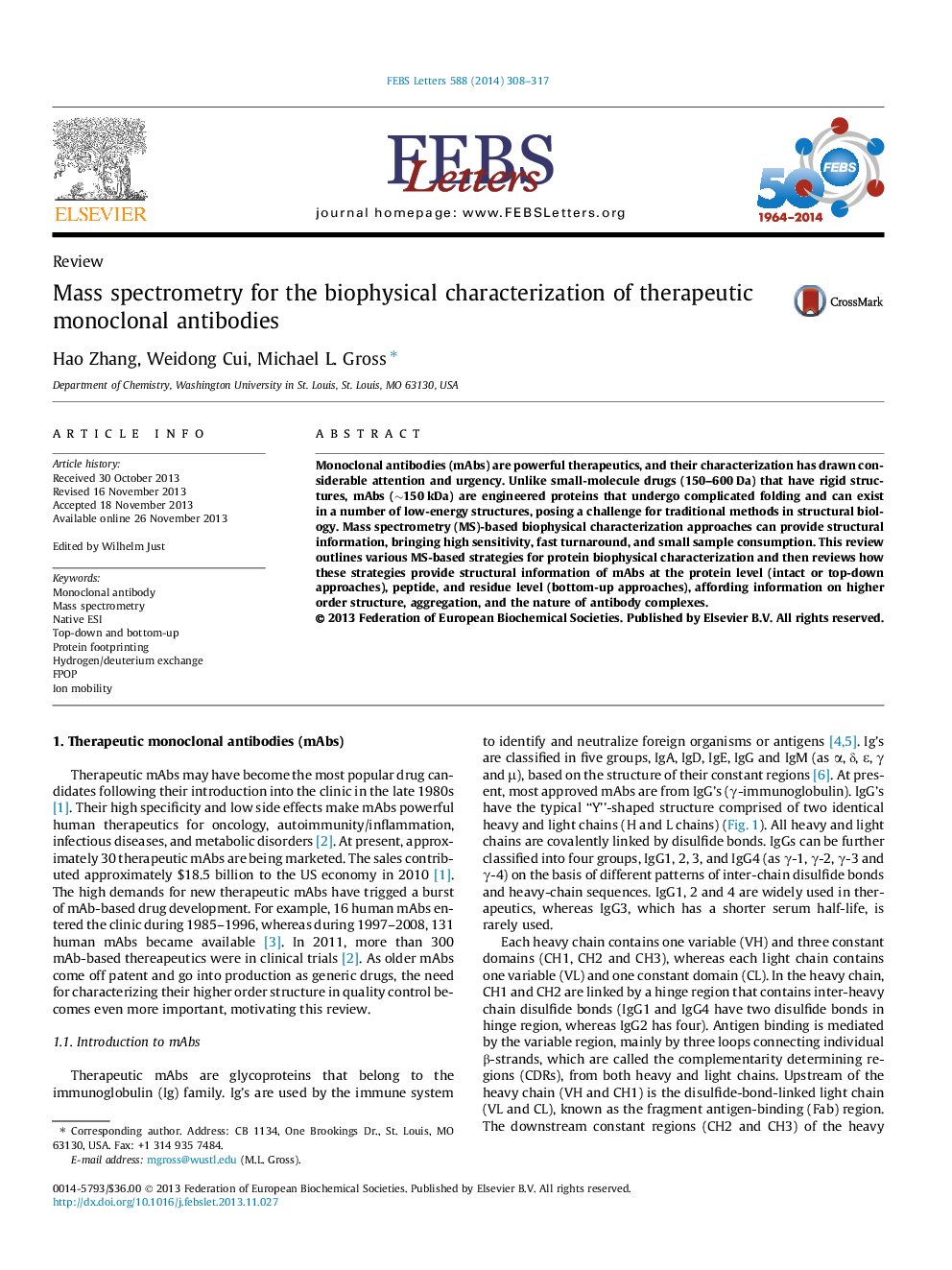| Article ID | Journal | Published Year | Pages | File Type |
|---|---|---|---|---|
| 2047771 | FEBS Letters | 2014 | 10 Pages |
Monoclonal antibodies (mAbs) are powerful therapeutics, and their characterization has drawn considerable attention and urgency. Unlike small-molecule drugs (150–600 Da) that have rigid structures, mAbs (∼150 kDa) are engineered proteins that undergo complicated folding and can exist in a number of low-energy structures, posing a challenge for traditional methods in structural biology. Mass spectrometry (MS)-based biophysical characterization approaches can provide structural information, bringing high sensitivity, fast turnaround, and small sample consumption. This review outlines various MS-based strategies for protein biophysical characterization and then reviews how these strategies provide structural information of mAbs at the protein level (intact or top-down approaches), peptide, and residue level (bottom-up approaches), affording information on higher order structure, aggregation, and the nature of antibody complexes.
